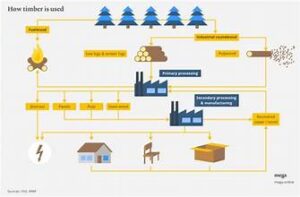
In recent years, the timber industry has undergone significant changes driven by increasing environmental awareness and stringent regulations. Sustainable timber practices are not just a trend but a necessary evolution in an industry that plays a crucial role in global economies and ecosystems. This article explores how environmental regulations are reshaping timber practices, promoting sustainability, and fostering a greener future.
The Rise of Sustainable Timber Practices
Sustainable timber practices aim to minimize the environmental impact of logging and wood production while ensuring that forests are managed responsibly. These practices are essential for conserving biodiversity, combating climate change, and maintaining the health of forest ecosystems. As awareness of environmental issues grows, both consumers and companies are pushing for more sustainable practices within the timber industry.
Key Environmental Regulations Influencing the Timber Industry
Several key regulations and initiatives are transforming how timber is sourced, processed, and used:
1. The Forest Stewardship Council (FSC) Certification
The Forest Stewardship Council (FSC) is an international organization that sets standards for responsible forest management. The FSC certification ensures that timber products come from forests that are managed sustainably, promoting environmental, social, and economic benefits. Companies that achieve FSC certification demonstrate their commitment to sustainable practices, including protecting wildlife habitats, preserving soil quality, and respecting indigenous rights.
2. The European Union Timber Regulation (EUTR)
The European Union Timber Regulation (EUTR) was implemented to prevent the entry of illegal timber into the EU market. This regulation requires companies to demonstrate that their timber products have been legally sourced, with a focus on traceability and transparency in the supply chain. The EUTR has encouraged companies to adopt better practices and invest in systems that verify the legality of their timber sources.
3. The Lacey Act
In the United States, the Lacey Act regulates the importation of timber and wood products, ensuring they are harvested in compliance with the laws of the country of origin. This law targets illegal logging practices and promotes sustainable forestry by penalizing those who engage in or benefit from illegal timber trade. The Lacey Act has led to increased scrutiny and better practices among timber suppliers.
4. The Paris Agreement
While not specific to the timber industry, the Paris Agreement’s emphasis on reducing carbon emissions has influenced timber practices. Forests play a vital role in carbon sequestration, and sustainable timber practices contribute to climate goals by maintaining healthy forests and reducing deforestation. The timber industry’s alignment with the Paris Agreement supports global efforts to combat climate change.
Benefits of Sustainable Timber Practices
1. Environmental Conservation
Sustainable timber practices help conserve biodiversity by protecting habitats and reducing deforestation. Practices such as selective logging, reforestation, and agroforestry contribute to maintaining healthy ecosystems and promoting forest regeneration.
2. Economic Advantages
By adopting sustainable practices, the timber industry can create long-term economic benefits. Responsible forest management ensures a steady supply of timber while preserving the value of forest resources. Additionally, sustainable practices can enhance market access and meet consumer demand for environmentally friendly products.
3. Enhanced Brand Reputation
Companies that commit to sustainable timber practices can enhance their brand reputation and differentiate themselves in the market. Certifications such as FSC and adherence to regulations like the EUTR and Lacey Act signal a company’s dedication to environmental stewardship, which can attract environmentally conscious consumers and investors.
Challenges and Future Directions
While the shift towards sustainable timber practices is promising, challenges remain. Ensuring compliance with regulations, managing costs, and addressing issues related to supply chain transparency are ongoing concerns. The industry must continue to innovate and adapt to meet evolving environmental standards and consumer expectations.
Conclusion
Environmental regulations are driving significant changes in the timber industry, fostering more sustainable practices and promoting responsible forest management. As regulations such as the FSC certification, EUTR, Lacey Act, and global climate agreements continue to shape the industry, the focus on sustainability will only grow stronger. Embracing these changes not only benefits the environment but also supports economic growth and enhances brand reputation. The future of the timber industry lies in its ability to balance environmental stewardship with economic viability, ensuring a greener and more sustainable world for generations to come.


